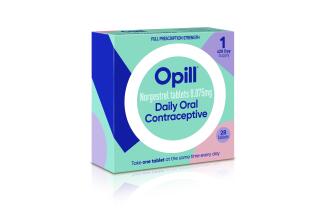New Contraceptive Marketing Strategy
- Share via
One of the oldest forms of contraception is being marketed with a new look.
The product itself, the first condom with an adhesive seal, was developed by a company that usually makes urologic devices. The Mentor Contraceptive is the first venture into contraception by the Minneapolis-based Mentor Corp., which developed the product as the result of earlier research on urine collection devices.
However, the ‘80s look of the condom has to do with its advertising. It is packaged to appeal to women in a little white, purple and mauve plastic cup, and is being sold in feminine hygiene sections of pharmacies.
It is the first condom to be advertised almost exclusively in women’s magazines, and, unlike the romantic look of much advertising for other kinds of contraceptives aimed at women and focusing on family planning, the Mentor research and marketing have a heavy emphasis on the current public concern about sexually transmitted diseases.
This concept has been sold to men for years, as every man who has been in the military knows, but Mentor claims to have the first condom developed specifically as a disease preventative for women.
The firm’s market studies showed that about 30% of condoms are bought by women--some drug chains reported as much as 70%--according to Mentor’s health care products manager Jane O’Meara. The first full-page ads for the Mentor condom in September generated almost 6,000 responses, O’Meara said.
The ad shows a woman who looks to be in her late 20s, who might be single or married, with the headline, “I never thought I’d buy a condom” and copy that begins, “Let’s face it, sex these days can be a risky business. . . .”
The ad included a toll-free number for information and has run in magazines including Ms, Cosmopolitan, Working Woman, New Woman, Savvy, Self, Shape and Psychology Today.
More traditional women’s magazines were approached and initially turned down the ad, but some have since accepted it, O’Meara said. It was also advertised in some gay men’s publications, but except for Psychology Today, all of the mainstream advertising has been in women’s magazines.
“I think it’s great,” said David Grimes, professor of gynecology at USC School of Medicine, referring to Mentor’s packaging and advertising.
Grimes, formerly an epidemiologist with the federal Centers for Disease Control, is also vice chairman of the national medical committee of Planned Parenthood.
The committee has not considered particular condoms or their advertising, but speaking as an individual physician, Grimes is enthusiastic about condoms in general and very enthusiastic about selling them to women. “I think condoms are going to enjoy a great renaissance in the years ahead as prevention for AIDS and other sexually transmitted diseases,” he said. “Women in particular should be armed with condoms, not men. Sexually transmitted disease is sexist. So is pregnancy.”
(Many sexually transmitted diseases are more easily diagnosed in men; some, like chlamydia and gonorrhea, are often asymptomatic in women and the disease can silently progress until it causes serious conditions like pelvic inflammatory disease and infertility.)
“Women and children bear the brunt of sexually transmitted diseases,” Grimes said. He has recommended to some of his patients who use other forms of contraception such as the Pill that they use condoms as an adjunct to prevent disease. “I think women should carry condoms in their purses,” he said.
Grimes also favors new forms of marketing of condoms. “The Japanese have been way ahead,” he said, “with fancy names, different colors.” These kinds of marketing for condoms are just beginning here, he said.
In response to the telephone number and a reply card that was included with some of the Mentor ads, “California was No. 1 in inquiries,” O’Meara said, followed by New York, Pennsylvania, Ohio and New Jersey.
According to the company’s research, the woman condom buyer is of any age from 21 to menopause, is likely to be an urban professional and has been advised of a personal risk with other forms of contraception. Also, she is concerned about protection from sexually transmitted disease. “With the epidemic of STD (33,000 new cases a day, according to the Centers for Disease Control), the condom is looked at not only as contraception,” O’Meara said. “It is a personal hygiene item.”
About two thirds of the several thousand responses to the ads came from women and the rest from men, most of whom said their wives or women friends had suggested they call, O’Meara said. “Most of the women were really impressed that we advertised it to women,” she said. “Nobody has addressed that population before.”
The marketing target populations in order of priority were single women, married women, and gay men, the first and third groups being considered at highest risk for sexually transmitted diseases.
The company has not been particularly worried that women would be shy about buying condoms in drugstores. O’Meara said that the market research and consumer replies indicate that, “Women are more desensitized to buying personal hygiene products in stores and women are (used to being) in charge of contraception as well.” It has been men, she said, who are more likely to want to mail-order condoms rather than buy them at a counter.
More to Read
Inside the business of entertainment
The Wide Shot brings you news, analysis and insights on everything from streaming wars to production — and what it all means for the future.
You may occasionally receive promotional content from the Los Angeles Times.









